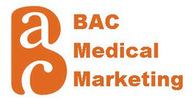- I am writing to let you know that I have sold BAC Medical Companies, and its seven divisions, because the timing and the terms of sale were the "perfect storm." Yes, somebody made me an offer I couldn't refuse! But seriously, I always wanted to go out on top and on my own terms, and that, I'm happy to say I did.
- The value in the business is created through the support of loyal clients like yourselves, and so I have worked hard to ensure that the on-going business recognizes that client interface support and processes are embedded in the underlying culture.
- The new owners, who will be named at a later date, recognizes that the price they are paying includes a premium for the goodwill that has been created through our excellent relationships with our existing clients, and so they are keen to ensure that they protect that value by working hard to keep existing clients happy.
- We have sought out a buyer who really appreciates the business, understands how to operate it properly, and is keen and capable of developing its future potential.
- I will be staying on through the transition period to ensure a smooth handover of the business.
- No major changes are planned for the business in the short term. The new owners, however, will be seeking client feedback to identify how additional clients value can be created.
- The employees of the business support the sale and are positive about the future under new management.
- I am available to answer any questions you loyal clients may have.
Thank you for 15 wonderful years of loyal business. I am in your debt and it was truly an honor to serve you..
Best wishes,
Bruce A. Cadkin, MBA

 RSS Feed
RSS Feed































